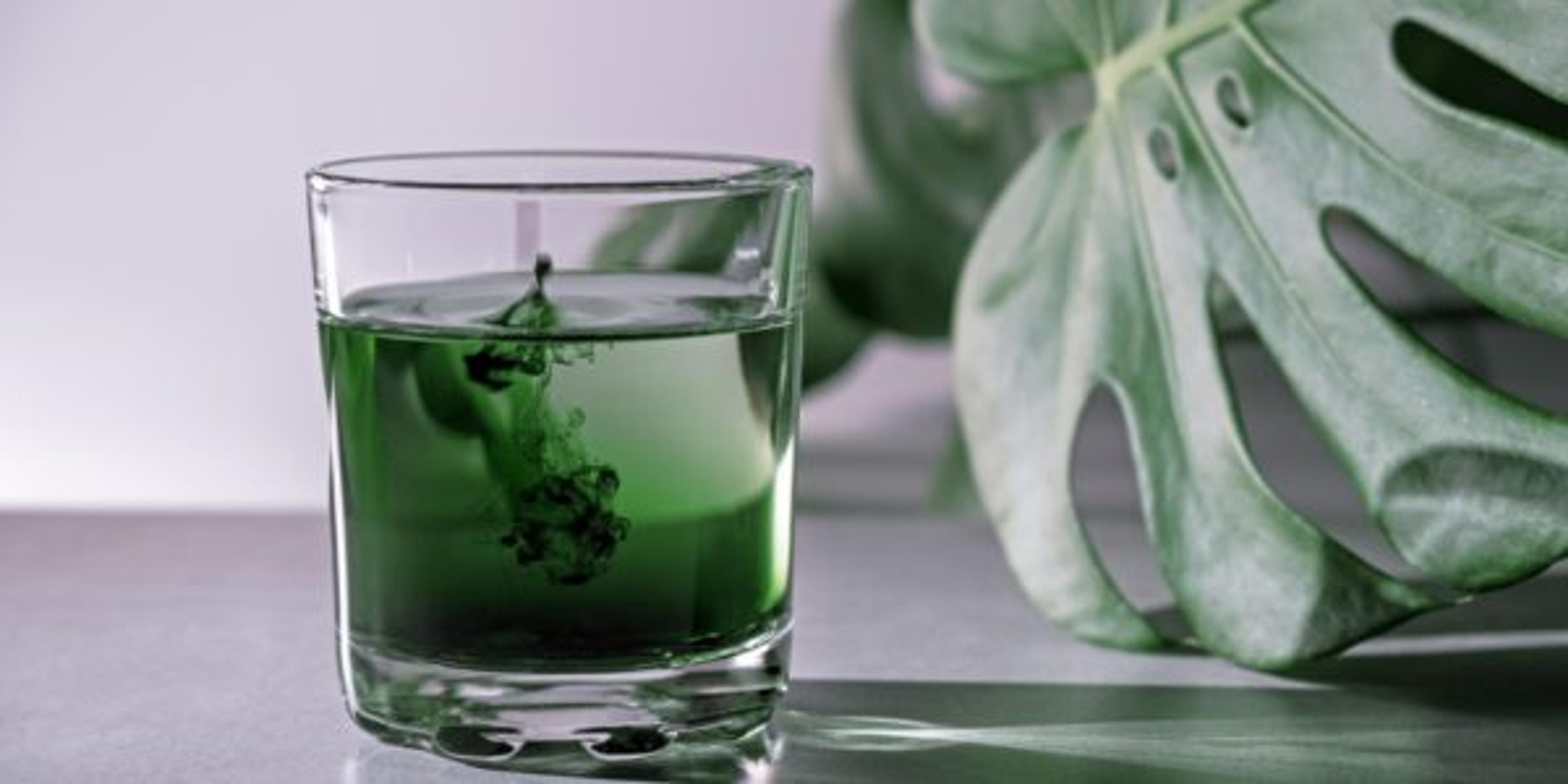TikTok Health Trend Fact Check: Does Liquid Chlorophyll Work?
Jake Newby
| 3 min read

One of TikTok’s most popular health trends of 2021 revolved around a green liquid hailed by users as a “skincare hack” and a “stress reliever,” among other enticing descriptors.
By adding liquid chlorophyll to a glass of water, tons of TikTok content creators claimed they were ingesting a cure-all product capable of healing wounds, supporting weight loss, treating acne, and boosting energy, among other alleged health benefits.
Before we delve into how valid the above claims are, it’s important to note the distinction between chlorophyll and the green droplets TikTok users are gushing over.
What is chlorophyll?
The substance you see on the popular social media app likely isn’t made of 100% pure chlorophyll. Liquid chlorophyll drops contain chlorophyllin, a water-soluble version of chlorophyll that combines sodium and copper salts with chlorophyll.
Chlorophyll is the green pigment responsible for giving plants and algae their green color and for helping them absorb energy from the sun as they undergo photosynthesis.
Can liquid chlorophyll be harmful?
Natural chlorophylls are not known to be toxic, according to doctors at the Oregon State University. However, there are a handful of mild side effects associated with orally consuming chlorophyll, including gastrointestinal distress, green discoloration of urine or feces and in some cases, skin irritation, especially when applied topically to wounds.
Chlorophyllin is known to have many similar side effects.
What are the proven health benefits to using liquid chlorophyll?
There isn’t much clinical research out there to suggest that liquid chlorophyll’s health benefits, as toted by TikTok’ers toted over the past year, are valid.
Small studies have demonstrated chlorophyll’s skin-healing powers. A pair of 2015 studies found that chlorophyll helped improve acne-prone skin of subjects with enlarged pores as well as the sunburnt facial skin of subjects in a separate study. But in both cases, the chlorophyll was applied topically, as an ointment.
Research in early studies on humans showed that taking 100-milligram doses of chlorophyllin three times a day for four months decreased aflatoxin damage to DNA by up to 55%.
Other studies show that there is a connection between eating vegetables and cancer protection.
For scientific purposes, this leaves liquid chlorophyll as a highly unproven health entity. Most doctors consider it to be relatively harmless, and say it’s OK to take in moderation, while also failing to find it supremely beneficial.
Some wellness dietitcians recommend opting for the liquid chlorophyll over the tablet form, as liquid supplements are more easily absorbed by the body.
In any case, if you’re interested in adding liquid chlorophyll to your diet, you should discuss it with your Blue Cross Blue Shield of Michigan primary care provider first. And since its effects on pregnant or breastfeeding women have not been studied, those women should avoid taking liquid chlorophyll.
When in doubt, your best bet is to go straight to the source for natural chlorophyll intake.
Chlorophyll is found in all fresh, green plants and vegetables. It’s present in parsley, spinach, green beans, wheatgrass, arugula, peas, leeks and more. In addition to plenty of vitamins and minerals, green vegetables are chockful of fiber, which promote good digestion and help maintain strong blood sugar levels.
Related:
Photo credit: Getty Images





